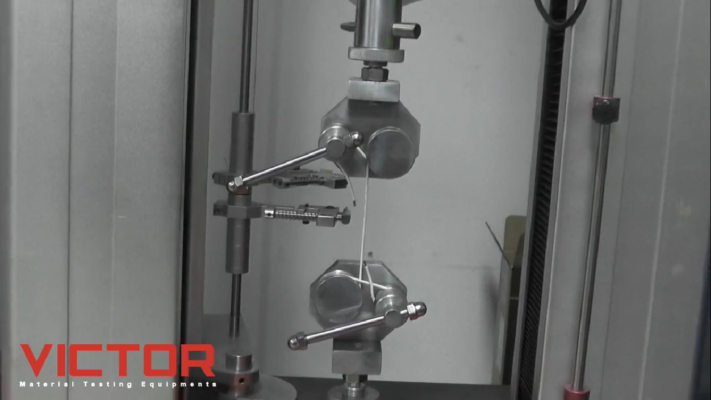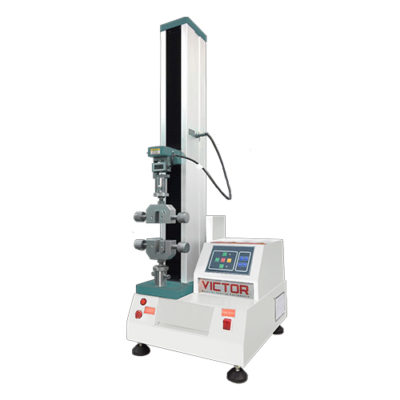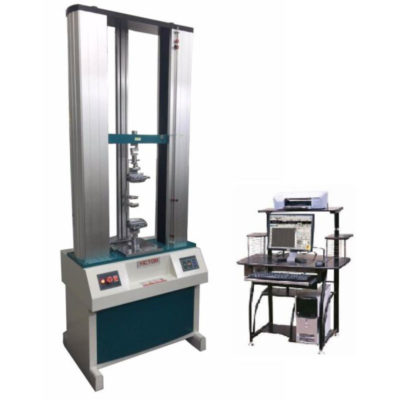ASTM is an international standards organization that is located in the United States of America. The purpose it was introduced to the industry is to publish technical standard agreements for various materials, product, systems and others. Among the ASTM standards that are often used in the industry is ASTM D885.
ASTM D885 Test Standard
Description For ASTM D885
ASTM D885 is an international test standard design for testing the tensile strength of fibers and cords made specifically for use in the manufacture of pneumatic tires. This test standard also can be use for yarn, cords and other industrial applications. The result of this test is to determine the tensile strength of the cord being tested. Manufacturing industries such as filament yarns made wholly of manufactured organic-base fibers and pneumatic tires often use this standard. Aramid fibers are commonly tested to this specification.
ASTM D885 is a relatively simple tensile test to perform. This is because the test specimen only needs to be pulled at a constant rate until it breaks. Nowadays, ASTM standards are highly preferred by both corporate or government bodies. In Malaysia, most industries use the ASTM D885 standard in their companies. The Malaysian government has also adopted this standard. This tensile test can be perform on using Universal Testing Machine (UTM) and also known as the tensile testing machine.
The following are the properties of tensile commonly measure through ASTM D885:
- Breaking force
- Elongation
- Force at specified elongation (FASE)
Specimens For ASTM D885
Specimens are conditioned or oven-dried.
- Filament yarns
- Cords twisted
- Fabrics woven
- Nylon, polyester, and rayon yarns and tire cords twisted
Grips For ASTM D885
Capstan grip is design specifically for this application. It is suitable for use on cord and yarn. This grip is designed to allow specimens to be tested without slippage. Capstans are particularly built for testing high strength tyre cord and can grasp securely while maintaining fast throughput.
1. Capstan Grip


Suitable for wire, thread, yarn etc. This grip is suitable for use as it can reduce clamp pressure and providing essential specimen alignment. The specimens are clamp in the appropriate grips and pull at a constant rate until failure occurs.
Type of UTM machine
We recommend to use UTM machines with a capacity of 50N-20kN, it depends on the strength of the cord and yarn. We also recommend using smaller machines such as a single column or dual column types.
1. VEW 220E
VEW 220E desktop computer servo testing machine is a new material testing machine that combine with the electronic technology and mechanical transmission, it has accurate load speed, range of force measurement, Has high accuracy and sensitivity for the load, displacement measurement and control.
This series of machine using single-space structure, operational space at the bottom, it is mainly apply to test non-metallic and metallic material, which the load is less than 1kN, it has the parameters, such as stress, strain, the control mode of displacement, calculated max force, tensile strength, bending strength, compressive strength, elastic modulus, rate of elongation, yield strength and others.
Main function:
This machine can be apply to test lots of materials in tension, compression, tear, peel (can 90 degrees and 180 degrees) and other mechanical tests, such as rubber, tires, belt, shoes, plastic, film, acrylic, FRP, ABS, EVA, PU, aluminium-plastic pipe, composite materials, waterproof materials, fibers, textiles, wire and cable, paper, gold foil, ribbons, thread, spring, wood, medicine packaging materials, tapes etc.
2. VEW 2308
The machine is design by mechanical-electrical integration, the composition of the force-measuring Sensor, transmitter, microprocessor, mechanism of load drive, computer and color inkjet printer. The high-precision electronic motor can be set to five-speed, the components are connect by plug-way, Floor-standing models, it is taken account of modern industrial design and ergonomics in modelling and Coating. It can be test with all the materials in a stretch, compression, bending, shear, embedded relay, Peeling. tearing, crack, etc, such as rubber, plastics, leather, metal, nylon wire, fabric, paper, aerospace, packaging, construction, petrochemical, electrical, vehicle, etc.
The implementation of standards and standard configuration:
- GB/T4689.20-1996 Measuring fastness of leather’s adhesion
- QB/T2710-2005 Measuring leather’s expansion and the rate of elongation
- QB/T2711-2005 measuring tear force of leather
- QB/T2712-2005 measuring leather’s strength and stretch of spherical crack test
Test Procedure
- Prepare the specimens as describe in the method.
- Load the specimen into the capstan grip.
- Clamp specimen at the top of the grip first then carefully clamp the sample into the bottom grip.
- Use measuring equipment such as a caliper to measure the length of the specimen.
- Zero all the testing machine before starting the test.
- A slight preload may be apply to align the grips and remove slack.
- Start the test with constant rate until its failure/breaks.


